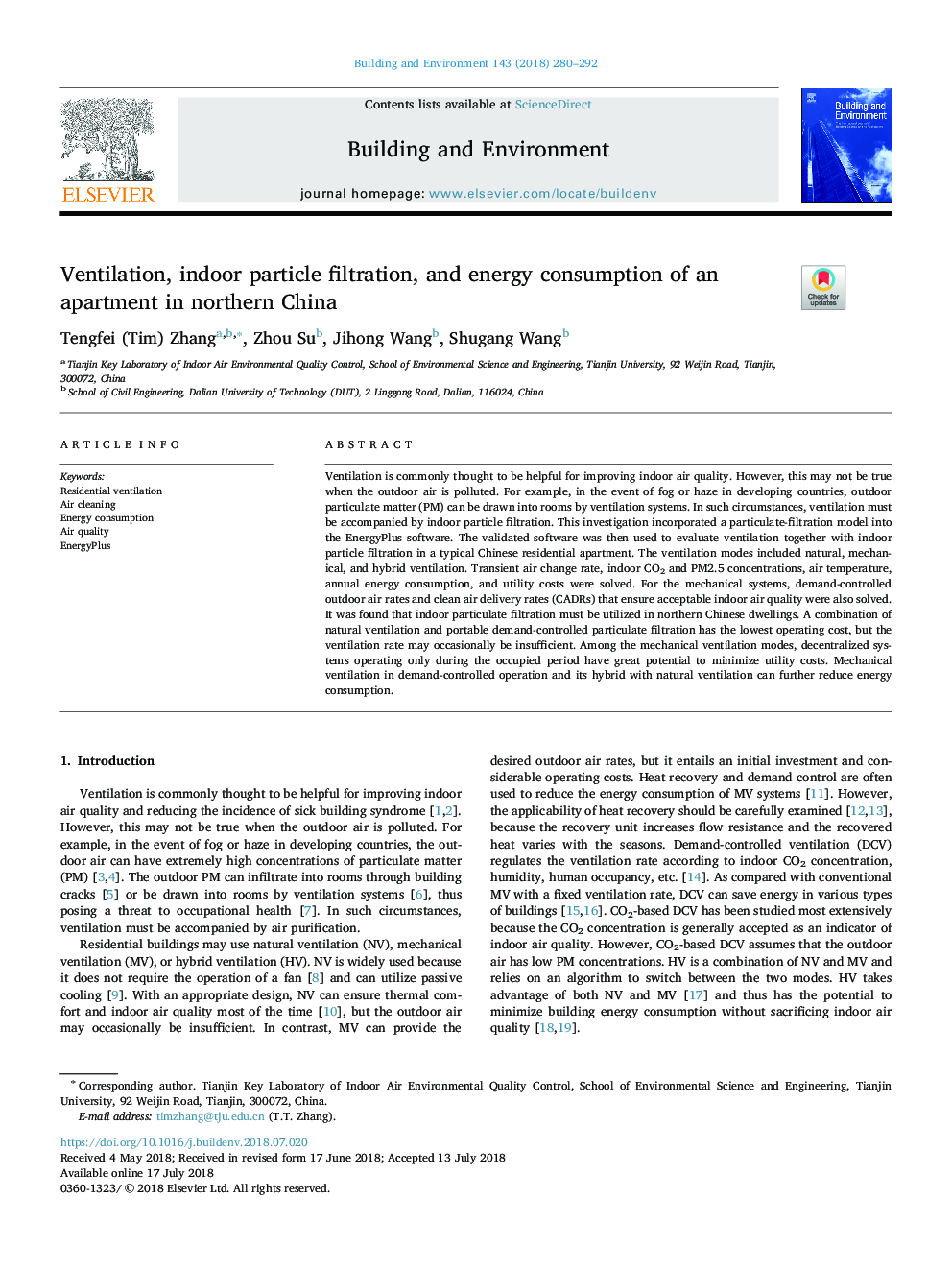| Article ID | Journal | Published Year | Pages | File Type |
|---|---|---|---|---|
| 6696550 | Building and Environment | 2018 | 13 Pages |
Abstract
Ventilation is commonly thought to be helpful for improving indoor air quality. However, this may not be true when the outdoor air is polluted. For example, in the event of fog or haze in developing countries, outdoor particulate matter (PM) can be drawn into rooms by ventilation systems. In such circumstances, ventilation must be accompanied by indoor particle filtration. This investigation incorporated a particulate-filtration model into the EnergyPlus software. The validated software was then used to evaluate ventilation together with indoor particle filtration in a typical Chinese residential apartment. The ventilation modes included natural, mechanical, and hybrid ventilation. Transient air change rate, indoor CO2 and PM2.5 concentrations, air temperature, annual energy consumption, and utility costs were solved. For the mechanical systems, demand-controlled outdoor air rates and clean air delivery rates (CADRs) that ensure acceptable indoor air quality were also solved. It was found that indoor particulate filtration must be utilized in northern Chinese dwellings. A combination of natural ventilation and portable demand-controlled particulate filtration has the lowest operating cost, but the ventilation rate may occasionally be insufficient. Among the mechanical ventilation modes, decentralized systems operating only during the occupied period have great potential to minimize utility costs. Mechanical ventilation in demand-controlled operation and its hybrid with natural ventilation can further reduce energy consumption.
Related Topics
Physical Sciences and Engineering
Energy
Renewable Energy, Sustainability and the Environment
Authors
Tengfei (Tim) Zhang, Zhou Su, Jihong Wang, Shugang Wang,
